More than a month later … I have moved to my new room, felt the first breath of autumn and felt a first longing for German Schwarzbrot. While meeting up with people at places throughout the city I noticed that my knowledge of street or landmark names is very basic. One reason might be the challenging Greek alphabet, another the relatively easy orientation thanks to the grid the inner city is based on which makes me think without street names.
So, coming up on the blog: a short lesson for me and for you a little insight to the paths I make through the city. I won’t present to you the people giving names to the popular and touristy meeting points in the city, as you will encounter Μέγας Αλέξανδρος even in your own history book.

my red lobster in front of Rotonda
Θεόδωρος Νάτσινας
Is the name of the street i live in. Theódoros Nátsinas (1872-1949) was a teacher for secondary schools born and educated in Athens. In 1898, he was sent to Turkish town Kayseri to support the local Greek minority, from 1903 on he taught in former Constantinople. After returning to the province of Western Macedonia in 1907, he fought in the Greek Struggle for Macedonia, a series of disputes between Greeks and Bulgarians about the Ottoman region of Macedonia. Later, Nátsinas settled in Kozani, Western Macedonia, that then became part of Greece again. There, he founded the first Agricultural Cooperative and established the first regional Scouts team. In 1918, he became general Superintendent of Secondary Education of Greece.
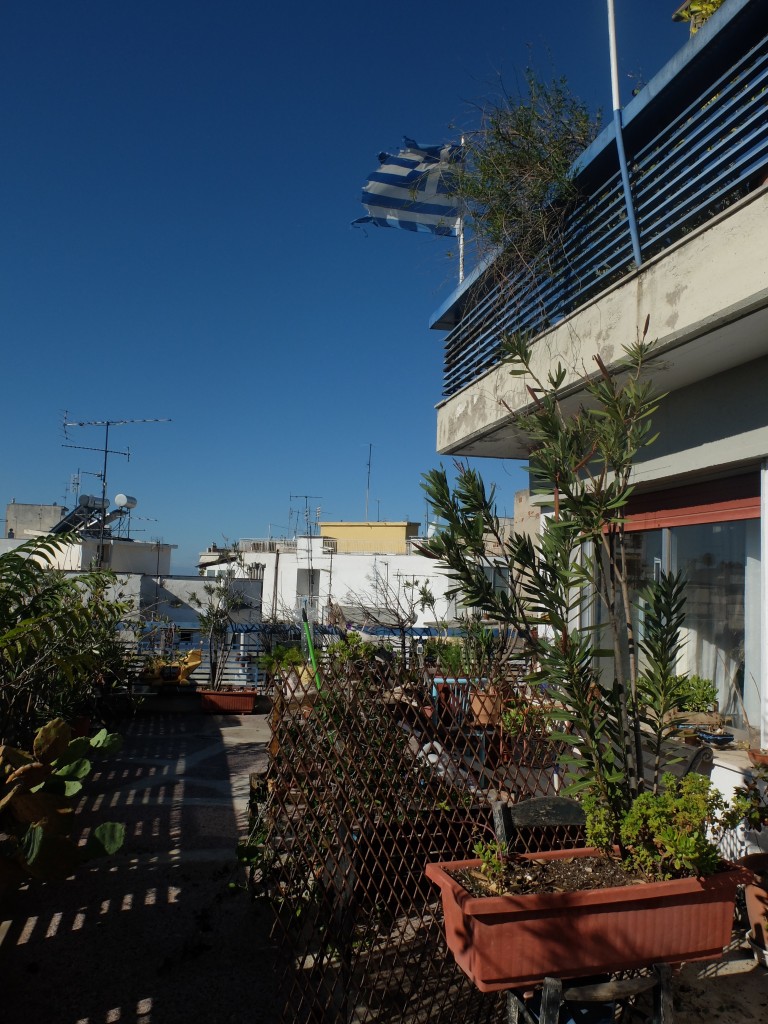
views from my new flat and the amazing rooftop terrace surrounding the whole apartment
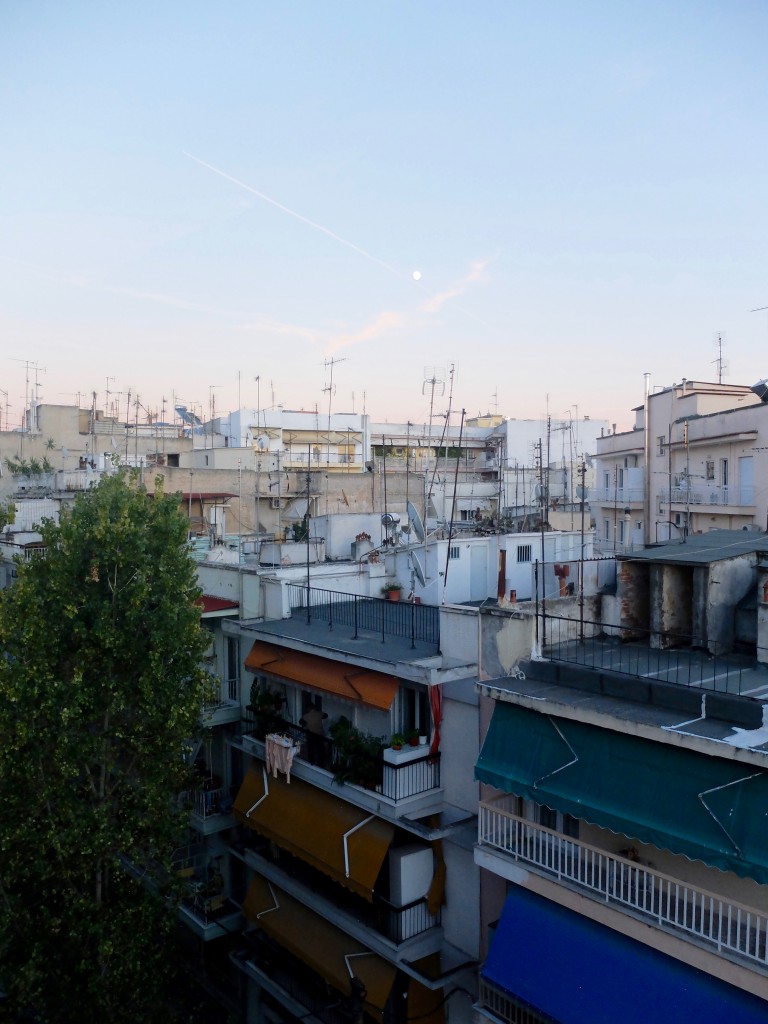
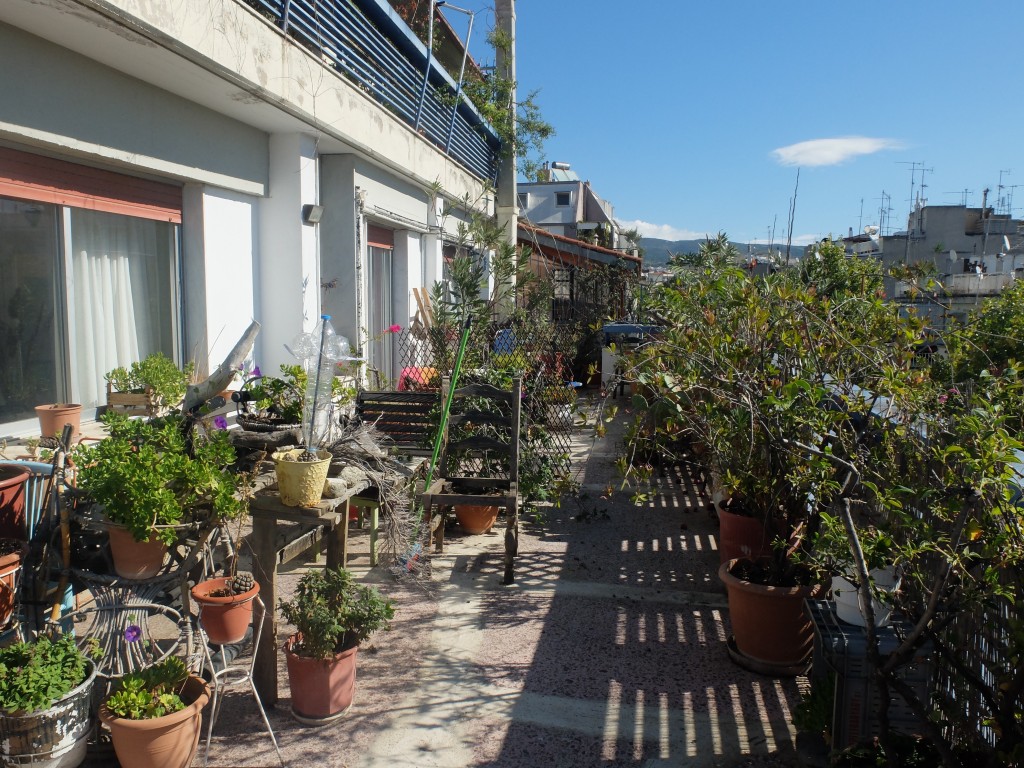
Γκαμπεττά
Gambetta, the street my orientation is based on as it is the one always leading home. Somehow I associate it with Italy, though I’d love to imagine that the street is dedicated to an Uruguayan football player called Schubert Gambetta (1920-1990), who won the world championship in Uruguay with the national team in 1950.
I presume the street was named after a french politician called Léon Gambetta (1838-1882): The son of a French mother and a father from Genua became a lawyer and later a member of the French national assembly. As a member of the radical left-wing, he especially opposed the predominant monarchy. After being the first minister of inner affairs in the newly founded French republic in 1870, Gambetta was even prime minister of France in the end of 1881 – for a period of only 74 days.
While Gambetta is also a metro stop in Paris (named after Léon), it is also an Italian measure unit for volumes, especially for grains. It was used in the region of Genua. 1 Gambetta equals 1,214 Liters. Diego Gambetta (*1951) though, is an Italian sociologist teaching at the University of Florence. He is researching about Mafia, trust, corruption and suicide.
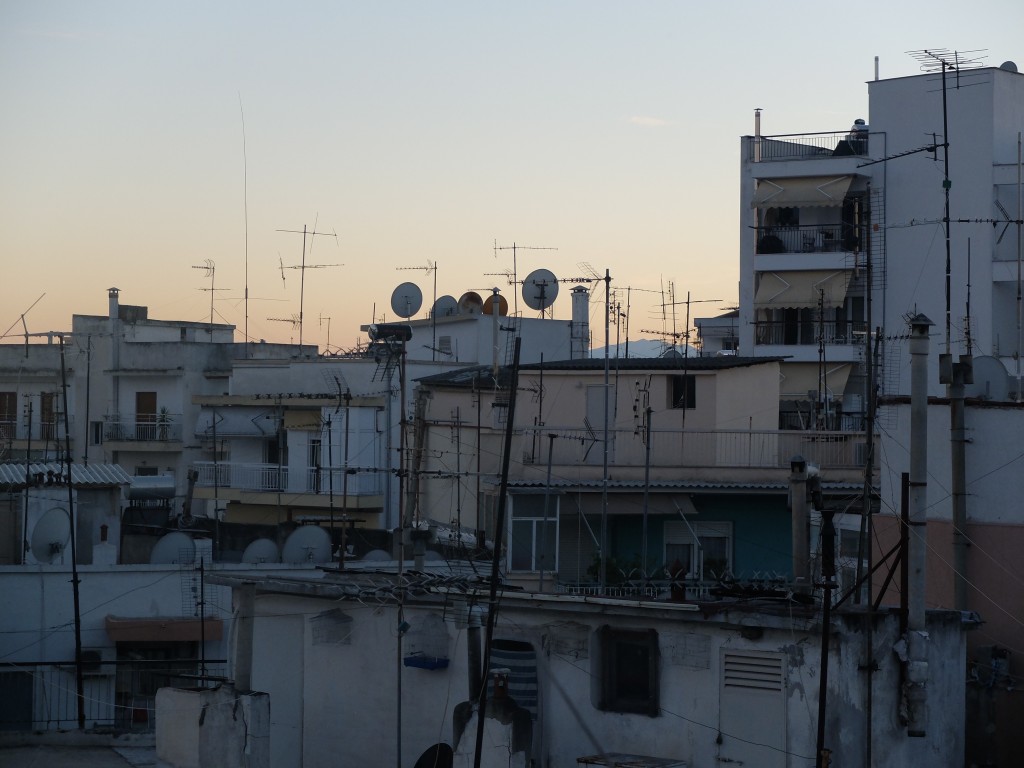
I can see Mount Olymp (around 80 km away) from my terrace – when it is clear weather in the city of fog …
25η Μαρτίου
The big street 1 block away from my house, is giving name to the area I live in, too. The 25th of march is a national holiday and commemorates the start of the war of independence against the Ottoman empire from 1821 to 1830. It is exactly 9 months before christmas day, so, in the Greek orthodox church, it marks the day archangel Gabriel announced Virgin Mary for being the mother of Jesus Christ. It is settled in the middle of the fast period before easter, in which orthodox christians are not allowed to consume all kinds of animal products. However, this day is an exception, so it has become a tradition to eat crispy fried cod fish with garlic day. You’ll find a recipe here.
Οδός Εγνατίας
I live where Egnatia crosses 25 Martiou. If you follow Egnatia, you will arrive on the north street of the grid of the inner city. It is named after the Via Egnatia, that passed by closely and was built in the time of the Roman empire. Via Egnatia reached from former Dyrrachium (a city in the Adriatic Sea) to Byzantium, which today is Istanbul. Unfortunately, it has not kept it’s original width of around 6m – today, it is a busy street with many lanes. It helps me orientate, but I try to avoid it when I go by bike. Downtown, it is a busy commercial street with mainly Greek brands, unfortunately marked by major construction works for the new metro since many years.
I find it stressful to take pictures downtown and as there are many typical Greek houses from the 195os (high, darkening the streets, but somehow charming), it is not an easy challenge to picture the city center. Instead, I found a map of the city from 1917, that depicts the restructured city: In Summer 1917, an enormous fire – lasting for 32 hours – destroyed big parts of the inner city. It left around 70.000 inhabitants of the city (a third of the city’s population) without homes and destroyed more than half of the businesses, which made many people unemployed. After the fire, the city was re-designed according to “European standards” under the supervision of Ernest Hébrard, a French city planner who was also working in the city of Hanoi, which was back then a french colony.
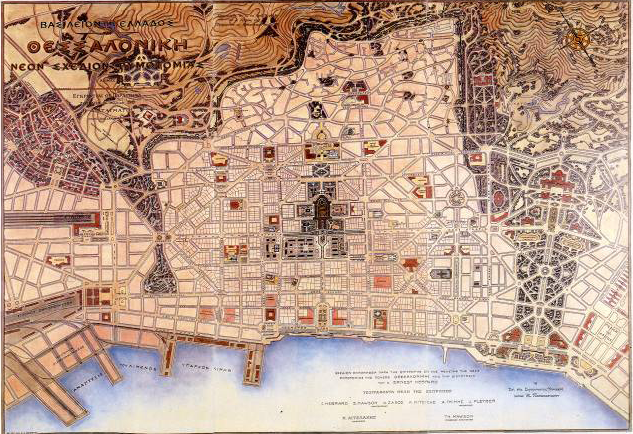
By Ernest Hébrard [Public domain], via Wikimedia Commons
Λεωφόρος Στρατού
The southern parallel of Egnatia is Leofóros Stratou, which hosts the Institut Français, where my Greek classes take place. It refers to the Army, that has several sites in the area, like the War Museum. Where it meets the building of ΧΑΝΘ (Greek version of YMCA) in the center, it becomes Οδός Τσιμισκή, the main shopping street. Tsimiski is named after Ἰωάννης Α΄ Τζιμισκής (Ioannis A. Tsimiski), a Byzantine emperor in the late 10th century.
Λεωφόρος Βασιλίσσης Όλγας
The Avenue of Vasilissis Olgas (queen Olga) runs parallel to Egnatia and Stratou – it earlier was the main road in the rich area of Thessaloniki, which can be observed in the many aristocratic villas from the late 19th century, you still find along the road, even if many of them are unfortunately decaying. Vass. Olgas is heading west, towards the city center. As the Institute is situated on this street, it is the one that drives me crazy when I can only use it in one direction. (I haven’t decided yet if i find it smart, to have mainly one-direction roads. Personally, I’d remove the car parkings from both sides of the street, to create more space for bikes and pedestrians.)
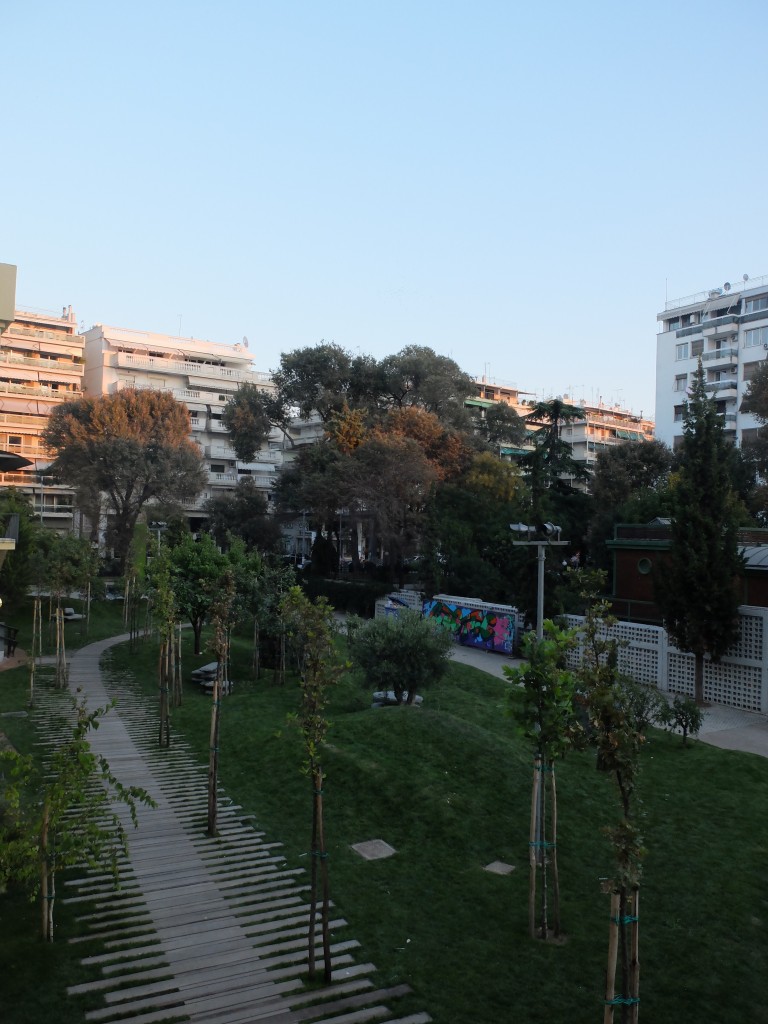
Vass. Olgas: The institute’s garden that has been redesigned this summer and now is a public space
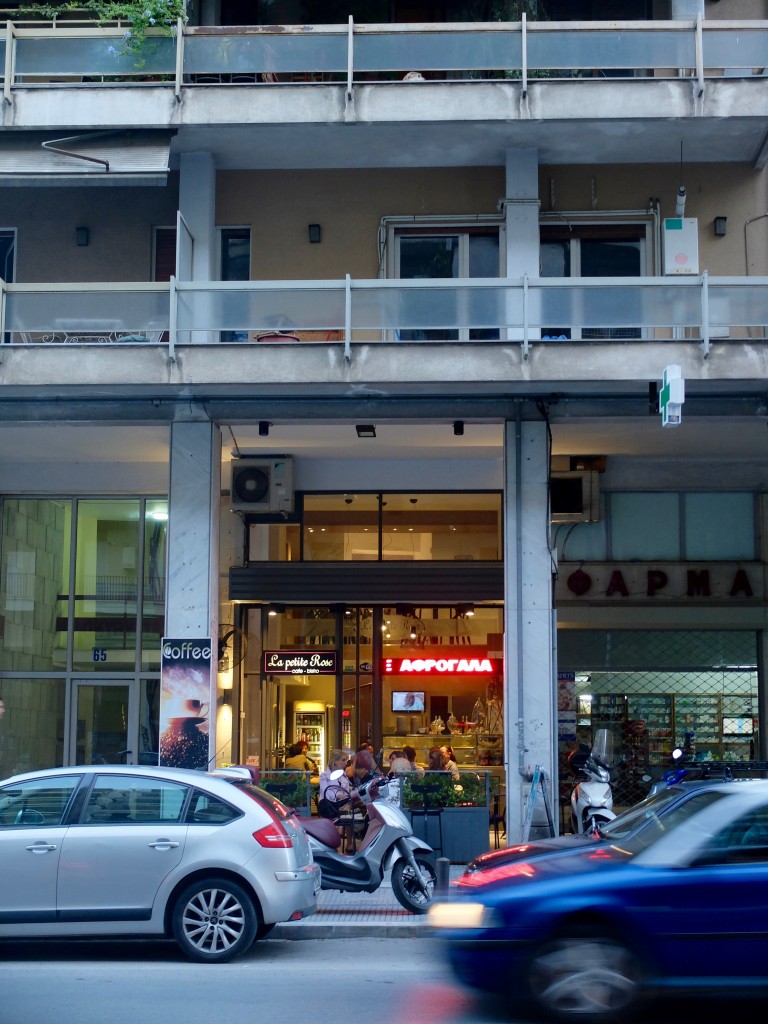

Vass. Olgas will always be associated with my lunch break 😉
Α.Σ. ΙΚΕΑ
is the eastern bus terminal of Thessaloniki. But that’s another story …